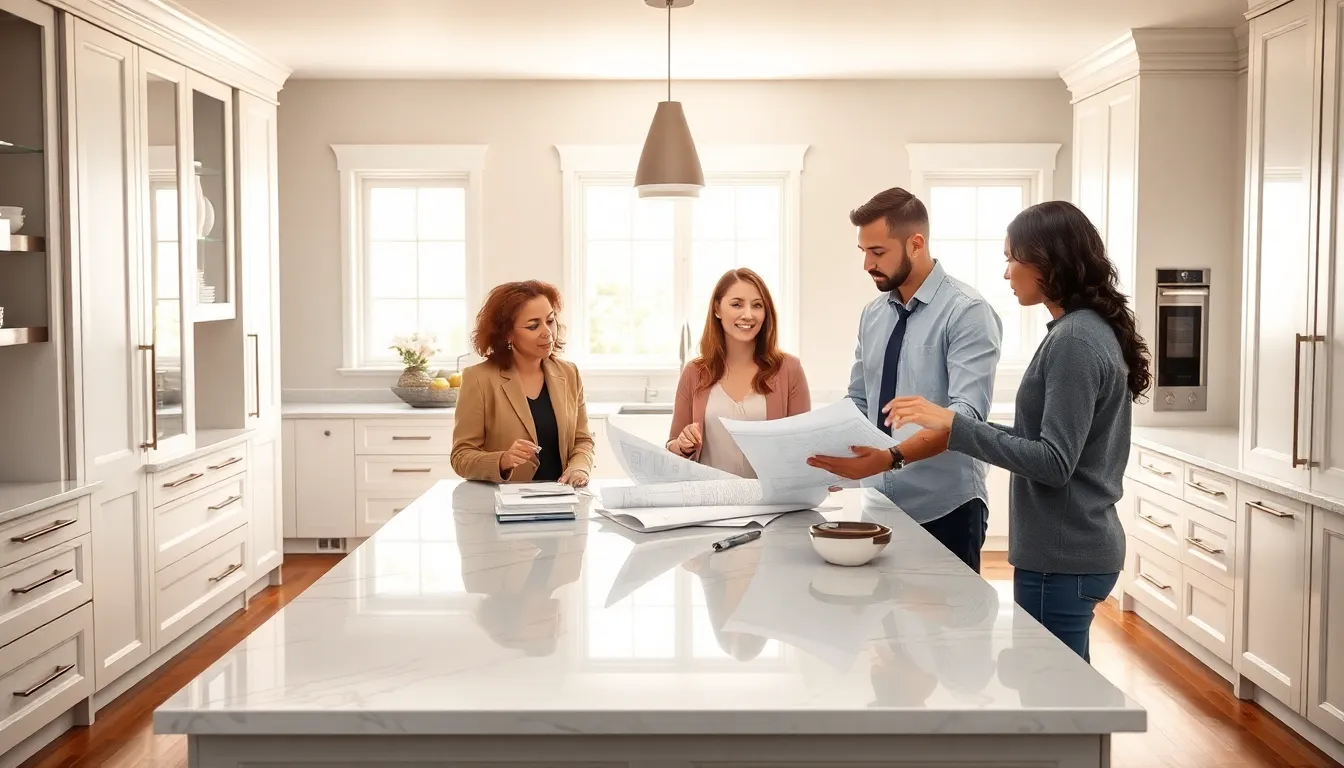When it comes to kitchen remodelling, the costs can feel as scrambled as an egg on a Monday morning. Whether you’re whipping up a gourmet kitchen or just seeking a stylish update, understanding the expenses involved is crucial. So, what makes up the price tag? And how can one avoid falling into the financial frying pan? Grab your apron as we dive deep into the world of kitchen remodelling costs, offering insights that can save your wallet from a pinch.
Table of Contents
ToggleFactors Influencing Kitchen Remodelling Costs

Several factors can stir the pot when determining kitchen remodelling costs. First up is the kitchen size: a spacious layout typically demands more resources, think cabinetry, countertops, and flooring. Next is the quality of materials. Opting for high-end materials can boost the overall cost significantly.
Labor costs also play a prominent role. Good craftsmen don’t come cheap, but their expertise can save you from costly mistakes down the line.
Also, the design complexity affects prices. A straightforward redesign is usually less expensive than an elaborate layout with custom features. Don’t forget to factor in permits and inspections, which can vary by location and building codes. Keep these variables in mind, and one can start to get a clearer picture of the potential kitchen remodelling budget.
Types of Kitchen Remodelling Projects
Kitchen remodels can vary widely in scope. Here are the most common types:
- Minor Remodeling: This includes cosmetic updates, such as painting walls, replacing countertops, or updating appliances. Costs are typically more manageable, often within the range of $5,000 to $15,000.
- Mid-Range Remodel: Here, homeowners usually plan for structural changes, add new cabinetry, or change the kitchen layout. Costs typically range from $15,000 to $50,000.
- High-End Remodel: If customization is your cup of tea, this is for you. High-end remodels often include luxury materials and specialized designs, costing anywhere from $50,000 and up.
Understanding the type of project is critical in estimating costs and setting a reasonable budget.
Average Costs of Common Kitchen Updates
Curious about where your money might go during a kitchen remodel? Here’s a breakdown of average costs for popular updates:
- Cabinetry: $100 to $1,200 per linear foot, depending on quality and materials.
- Countertops: Ranging from $50 (laminate) to $200 (quartz or granite) per square foot.
- Appliances: Expect to spend about $1,000 to $10,000, depending on whether you’re going with standard or luxury brands.
- Flooring: Costs vary, with options starting at around $3 per square foot for vinyl and going up to $15 or more per square foot for hardwood.
- Lighting: Average costs for fixtures can range from $50 to several hundred depending on the design.
Such expenses can add up quickly, so it’s smart to prioritize which updates best fit one’s needs.
Cost-Effective Kitchen Remodelling Tips
Looking to save a few bucks during your kitchen overhaul? Here are some savvy tips:
- Refinish Rather than Replace: For cabinetry, consider refinishing instead of a full replacement, which can save thousands.
- DIY When Possible: Simple tasks, like painting or installing a backsplash, can be tackled by the average homeowner with some YouTube tutorials.
- Shop Sales and Discounts: Often, materials and appliances go on sale during certain seasons or holidays. Keep an eye out for discounts.
- Focus on Fixtures: Switching out appliances and fixtures can have an enormous impact without the expense of a full remodel.
- Plan Wisely: Ensure your design choices align with your home’s overall style. This coherence can save money by avoiding the need for extensive structural changes later.
Implementing these strategies can help maintain quality while keeping costs low.
Financing Your Kitchen Remodelling Project
Understanding how to finance a kitchen remodel can be as critical as planning the remodel itself. Here are some options:
- Savings: If there’s enough set aside, this could be the best option, avoiding debt altogether.
- Home Equity Loans: These loans can provide access to funds based on the equity in your home. The interest rates are generally lower than credit cards.
- Personal Loans: Unsecured personal loans can help finance renovations, but the interest rates might be higher.
- Credit Cards: While convenient, use credit cards with caution to avoid spiraling debt.
Understanding various options allows homeowners to choose what best aligns with their financial situations.


